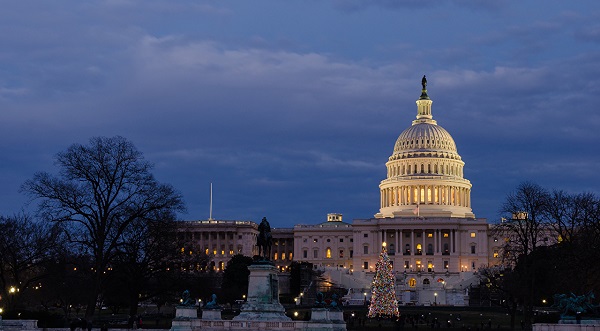US government shuts down
December 31, 2018 | Expert Insights

A partial US government shutdown has taken effect after US lawmakers failed to break a budget impasse.
This is the second government shut down of the Trump administration in less than a year.
Background
A government shutdown occurs when Congress fails to pass or the President fails to sign appropriations legislation funding federal government operations and agencies. Since 1976, when the current budget and appropriations process was enacted, there have been twenty gaps in budget funding, eight of which led to federal employees being furloughed.
Prior to 1990, funding gaps did not always lead to government shutdowns, but since 1990 the practice has been to shut down the government for all funding gaps. Shutdowns have also occurred at the state, territorial and local levels of government.
Government shutdowns have the effect of disruption to government services and increased cost to the government due to lost labour. During the 2013 shutdown, Standard & Poor's, the financial ratings agency, stated on October 16, 2013 that the shutdown had "to date taken $24 billion out of the economy", and "shaved at least 0.6 percent off annualized fourth-quarter 2013 GDP growth".
Analysis
Mr Trump, who has to sign off any deal, is insisting at least $5bn (£4bn) in funding be included for his long-promised wall along the Mexican border. Lawmakers adjourned last-minute talks on Friday evening.
In the absence of an agreement, funding for about a quarter of all US federal agencies lapsed at midnight (05:00 GMT Saturday). It means the departments of Homeland Security, Transportation, Agriculture, State, and Justice will begin to shut down and federal national parks and forests will also close.
The partial closure, the third of 2018, means hundreds of thousands of federal employees will have to work unpaid or be put on temporary leave.
In a video address published on Mr Trump's Twitter account shortly before the shutdown began, the president insisted the onus was on the Democrats to resolve the closure. Senior Democrats have accused the president of provoking the situation with a "temper tantrum".
A stopgap spending bill was passed in order to keep federal agencies open until 8 February - but the agreement did not include funding for Mr Trump's wall.
After a rare backlash from his supporters and hard-line Republicans, Mr Trump dug his heels in over the issue and insisted funds for the wall must be included for him to sign it off.
Under current rules, spending bills are approved in the House of Representatives with a simple majority vote. Mr Trump's party currently dominate that chamber, but the Democrats are set to take control of it in January.
The House has now approved $5.7bn (£4.5bn) of funding for the wall, but before the spending bill reaches the president it also needs to be passed by 60 votes in the Senate - where Republicans only hold 51 seats.
On Friday Mr Trump shared a graphic of his steel-slat wall design for the wall. Later, he posted a video regarding the immigration row, where he said it was "very dangerous out there".
His address, which was spliced with footage that appeared to show immigrants pushing down border fencing, cautioned about drugs and violent gang members entering the country illegally.
After last-ditch talks failed to reach a resolution on Friday night, members of Congress left Capitol Hill but are expected to return on Saturday. In his video, Mr Trump said "there is nothing" his Republican party can do about the shutdown and said "we need the Democrats to give us their votes" to resolve it.
Speaking on the floor on Friday, Senate Democratic leader Chuck Schumer laid blame with the president. "President Trump has thrown a temper tantrum and now has us careening towards a 'Trump shutdown' over Christmas," Mr Schumer said.
Mr Trump has suggested Senate majority leader Mitch McConnell should invoke the so-called "nuclear option" to break the impasse. The option would mean the bill could be approved in the Senate with a simple majority instead of the 60 currently required - bypassing the need for bipartisan support.
Assessment
Our assessment is that the government shutdown is a show of strength from the incoming Democratic majority in the House of Representatives. We believe that suspending essential public services for the purpose of scoring political points or fulfilling campaign promises is not a responsible course of action for a government.








Comments